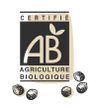Edible flowers
Highly prized by top chefs, edible flowers, whether fresh or dried, enhance dishes in all seasons. Edible flowers also have other benefits, such as their protective role in protecting crops from pests (aphids, Colorado beetles); they attract butterflies and are honey-producing. Be careful, however, before putting them on your plate, it is essential to know certain things about these pretty plants. The majority of flowers are very toxic. For example, you should absolutely not eat those of the following plants: Columbines, Anemones, Birthwort, Arum, Buckthorn, Buttercup, Bryony, Celandine, Hedge Honeysuckle L. xylosteum, all Hemlocks, Clematis, Dogwood, Cyclamen, Delphinium, Foxglove, Euphorbia, Spindle, Broom, Wallflower, Oleander, Cherry Laurel, Lupin, Lily of the Valley, Narcissus, Rhododendron, Common Groundsel, Privet, Yèble (non-exhaustive list)... Some have ONLY edible flowers. All other parts of the plant are toxic (acacia, honeysuckle, wisteria). Conversely, some edible fruits come from toxic flowers, such as those of the Solanaceae (tomato, eggplant)... so much so that insect repellent purines can be made! Even for edible flowers, you must first consume them in small quantities to check that you are not allergic to them. Naturally, you should only pick flowers that have been identified with certainty and only on untreated plants far from any sources of pollution. As with mushrooms, don't be fooled by what snails eat! Many flowers are edible, even raw, provided you only keep the petals (at least the pistil and sepals should be removed if they are large). This is the case for: Acacia, Filipendula yarrow, Agastache, Altroemeria aurantiaca, Sweet alyssum, Amaranth, Angelica, Judas tree, Sweet woodruff, Hawthorn, Begonia, Bergamot, Cornflower, Borage, Camellia, Roman chamomile, Nasturtium, Safflower, Honeysuckle (not the fruit!!), Edible chrysanthemum, Chives, Cleome, Poppy, Cosmos, Courgette, Dahlia, Deutzia, Eschscholtzia, Fuchsia, Gladiolus, Wisteria, Runner bean, Daylily, Hosta, Gardenia jasminoides, scented geranium, Hibiscus sabdariffa, Impatiens walleriana, German iris, Oriental hyacinth, common jasmine, lady's hyacinth, true lavender, Lavatera, lilac, lily, lucerne, magnolia, daisy, mallow, mimosa, maritime mertensia, bee balm, black mustard, snapdragon, grape hyacinth, catmint, nigella, sweet pink, marigold, evening primrose, bitter orange, poppy, daisy, pansy, star phlox, dandelion, primrose, meadowsweet, rose, hollyhock, saffron, scolyme, sedum spectabile, mock orange, marigold, elderberry, tagette, linden, sunflower, red clover, tulip, violet, yucca. You can also serve them as an aperitif decoration or in original cocktails, crystallized in sugar or salt, in salads, desserts, vinegar, oil or butter to flavor them. Some flowers can be dried (marigold, mimosa, tagetes) and stored in airtight jars. Yarrow - Latin: Achillea millefolium - Edible parts: Flowers, leaves Cornflower - Latin: Centaurea cyanus (syn. Cyanus segetum) - Edible parts: Flowers with an artichoke flavor Borage - Latin: Borago officinalis - Edible parts: Leaves, raw or crystallized flowers with a cucumber flavor Nasturtium grande variegatum - Latin: Tropaeolum majus - Edible parts: Flower buds, flowers, leaves, seeds. fresh or candied in vinegar Nasturtium Major dwarf - Latin: Tropaeolum majus - Edible parts: Flower buds, flowers, leaves, seeds. fresh or pickled in vinegar Edible chrysanthemum - Latin: Glebionis coronaria - Edible parts: Flowers, young leaves or fried stems Wild poppy - Latin: Papaver rhoeas - Edible parts: Petals, seeds. fresh, in syrup or confectionery. Cosmos sensation food coloring - Latin: Cosmos bipinnatus - Edible parts: Flowers Cosmos sulphureus - Latin: Cosmos sulphureus - Edible parts: Flowers Runner bean - Latin: Phaseolus coccineus - Edible parts: Pods and seeds Annual lavatera - Latin: Lavatera trimestris - Edible parts: Flowers, leaves White flax - Latin: Linum usitatissimum - Edible parts: Flowers and seeds Mauve de Mauritanie - Latin: Malva sylvestris - Edible parts: Flowers, leaves St. John's wort - Latin: Hypericum perforatum - Edible parts: Flowers, leaves, buds, in oil or infusions only Nigella damascena - Latin: Nigella damascena - Edible parts: Seeds Sweet pea - Latin: Lathyrus odoratus - Edible parts: Fresh flowers Single-flowered daisy - Latin: Callistephus chinensis - Edible parts: Flowers Marigold - Latin: Calendula officinalis - Edible parts: Dried flowers, flower buds Tagete Patula - Latin: Tagetes patula (syn. Tagetes erecta) - Edible parts: Flowers, leaves in salads or infusions Viperine - Latin: Echium plantagineum - Edible parts: Candied flowers or in salads Zinnia - Latin: Zinnia elegans - Edible parts: Flowers in salads or as a dish decorationDownload the edible flower advice sheet





